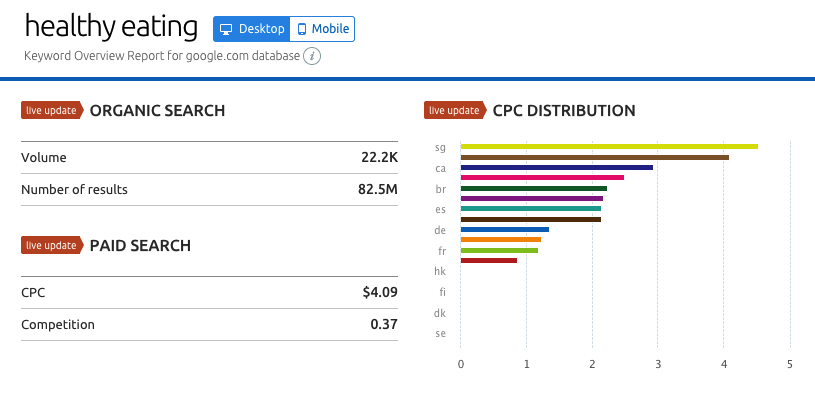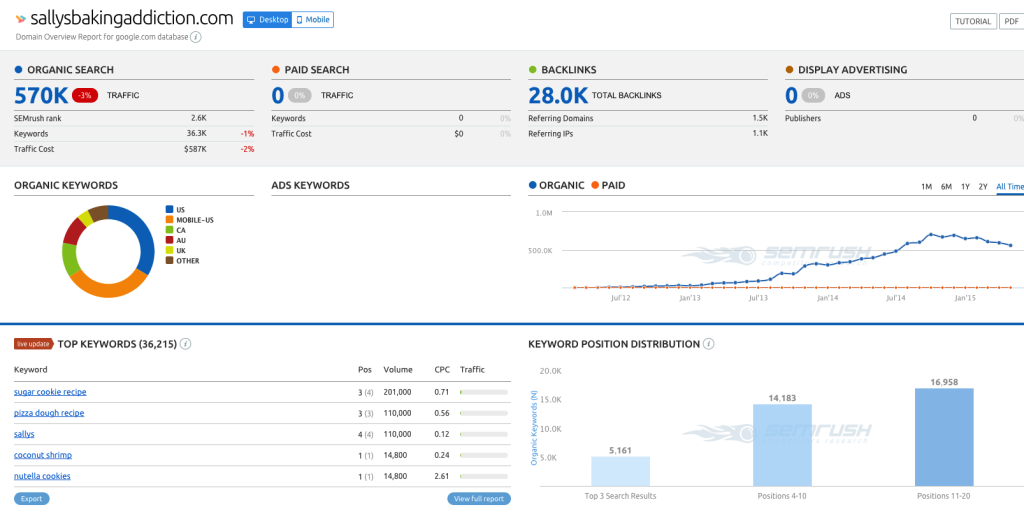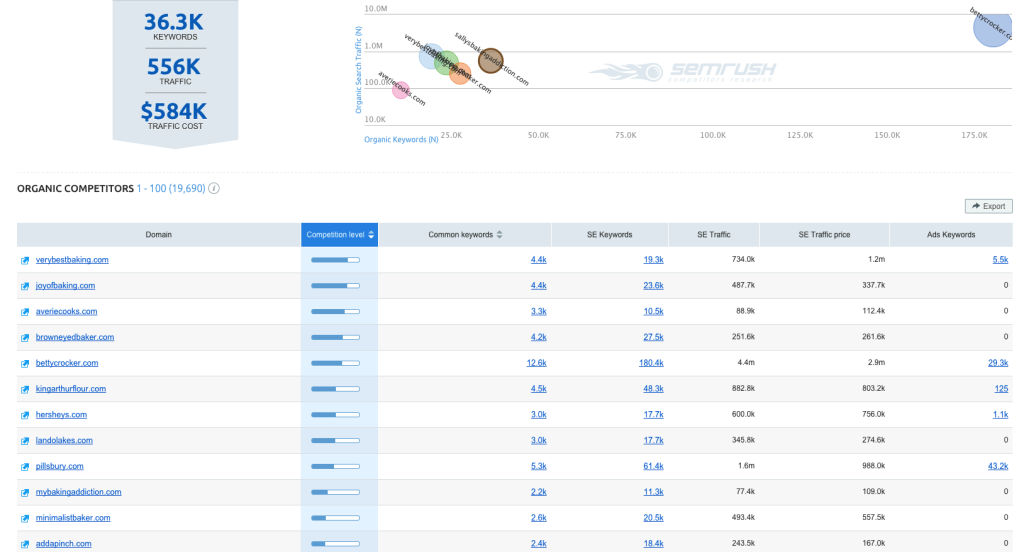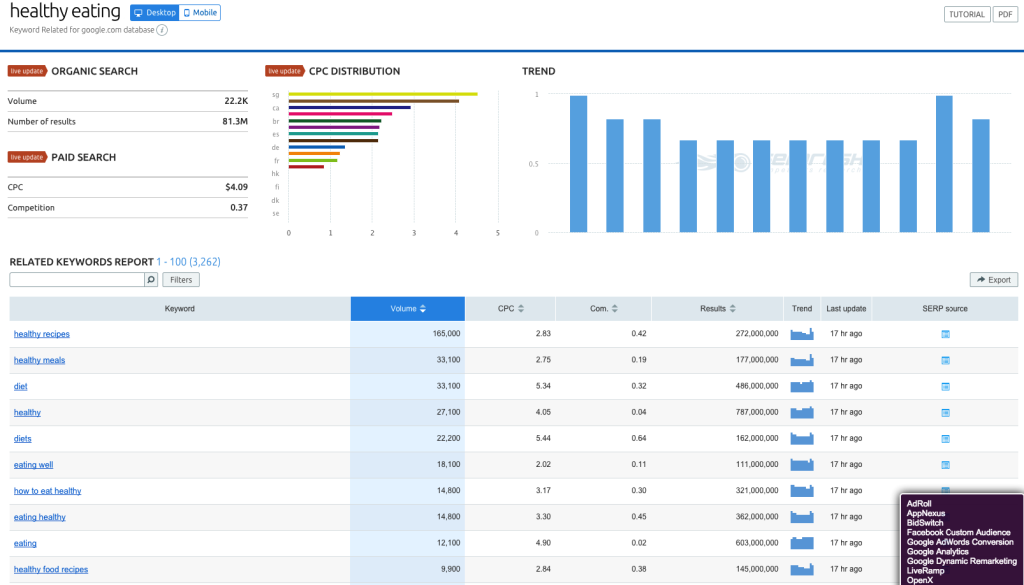SEO is a demanding game that publishers have to play in order for their site to gain any sort of relevant traction. For those that don’t know, SEO stands for “Search Engine Optimization” and it is crucial to attracting new visitors to your site. All search engines have an algorithm that determines the relevance of sites to a search term and then lists them in order on the results page. The goal of SEO is to provide a general guideline for your content strategy and site infrastructure. By crushing SEO, you’ll satisfy the aforementioned algorithms and render as one of the top sites in your search queries. There are many factors that go into determining the rank of a site but we are going to focus on the low hanging fruit: keywords.
Keywords act as a summary of your site for search engines.
Keywords are the terms and phrases your readers type into search queries that search engines then use to crawl the Internet for relevant sites. For example, if you wanted to buy a snowboard you wouldn’t look up “a website to buy and sell winter sports equipment,” you would look up “snowboards for sale” or simply just “snowboards.” Those broader terms are what search engines are looking for so you want to include them in your site prominently. In the early days, publishers could just list a bunch of popular keywords on their site and then hide it in the background so people couldn’t see it but that shady tactic doesn’t fool search engines anymore. Removing these tricks has leveled the playing field and now the publishers who prevail are those who legitimately and skillfully maximize their keyword use.
Finding The Right Keywords
Before you start your rise to the top of the results page you will need to do some research. Fortunately there are tons of tools that can help with this task and more. To keep the focus on keywords I will only be using one tool, SEMrush, to walk you through examples.
 Let’s say you want to start a blog about healthy eating. A good first step would be to analyze the keyword phrase “healthy eating.” The first section of data gives us stats about how popular this term is and how it pays based on location. From this information you can determine if there is enough demand for this type of content to create a piece of content centered around this topic.
Let’s say you want to start a blog about healthy eating. A good first step would be to analyze the keyword phrase “healthy eating.” The first section of data gives us stats about how popular this term is and how it pays based on location. From this information you can determine if there is enough demand for this type of content to create a piece of content centered around this topic.

This stage is also the time to look at your competitors. You can see how they are doing as a site, how effective their individual keyword use is, and how much of a threat they are. I pulled up the analysis of one of our favorite food publishers, SallysBakingAddiction/, to show how you can interpret other site data. The keywords for sallys show that the visitors are looking to learn how to make some delicious treats which explains why she is competing with big companies like Hershey’s and Pillsbury. Although your blog would be in the same content category as Sally’s, the keywords you use will be different which means you won’t necessarily by competing for the same results. Even though Sally isn’t a direct competitor you can still gain valuable insight into the food blog industry through her and other similar sites. Find out what recipes are in high demand and post your own variation or see what sites are linking to other food blogs and see how you can earn those backlinks.

Create Content With Keywords At Its Center
The best way to include relevant keywords in your site is to build your content around them. For example, for each post, pick one keyword or phrase that is at the center of what you’re writing about. Use it in your header, your page URL, all throughout your content, in your image alt text and in your meta description. Healthy eating is a fairly popular topic (82.5 million results on Google) and that much competition means you should probably cover more specific things than just healthy eating. Keyword tools like SEMrush can compile lists of related keywords and phrases that can help you decide what content to produce.

For example, “healthy recipes” has nearly eight times as much search volume as “healthy eating” so it would be in your best interest to include this term liberally in your site. Posting healthy recipes and labeling them as such would increase the presence of the keyword meaning better search engine visibility and more search traffic.
Keyword-based content also will help with user engagement. Since keywords come from what people are searching for your content would automatically appeal to their interests. By just following the trends in your verticals keywords, you can keep your website current and maintain growth.
Optimize. Optimize. Optimize.
The task of SEO is never over. Your audience will change and search engines will modify their algorithms meaning you need to always be watching for these changes to stay on top of the game. Now that your site is established you can analyze your own data and see what you can do to improve performance.
Still craving more SEO? Check out the4 SEO Tools Every Blogger Needs to Know.

